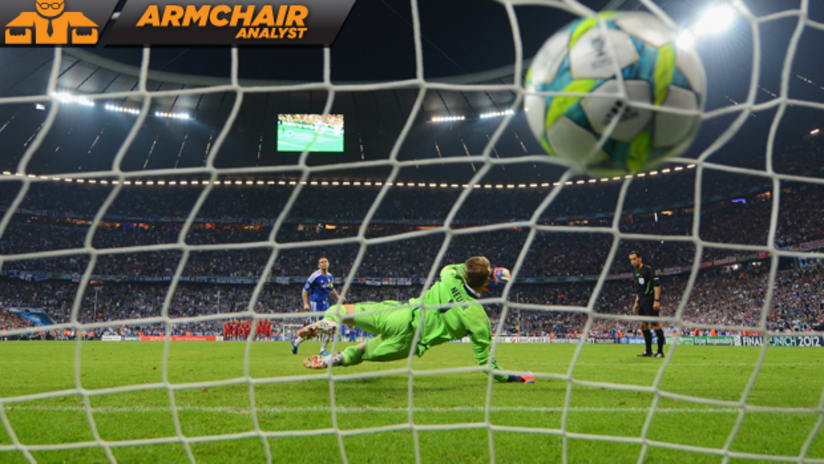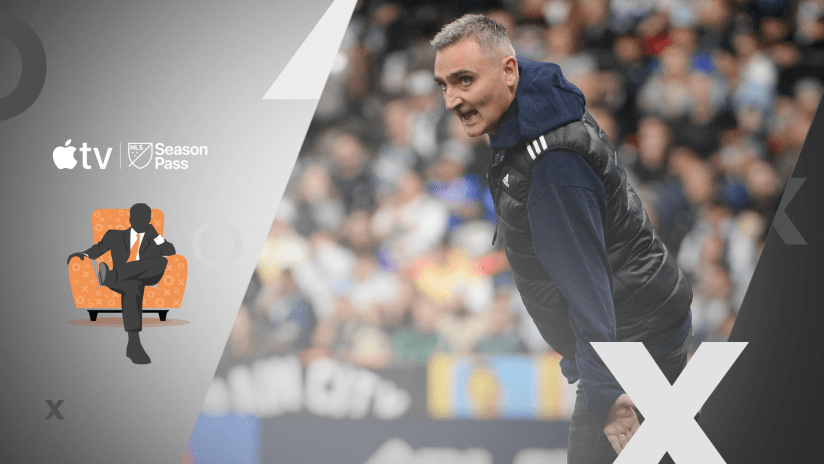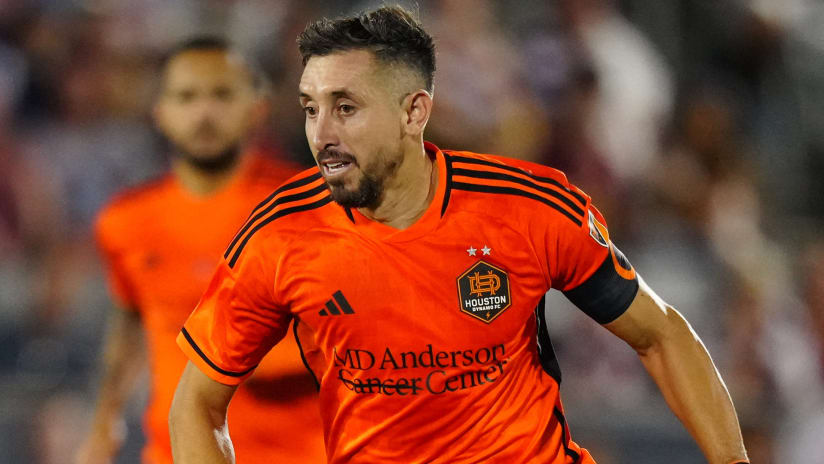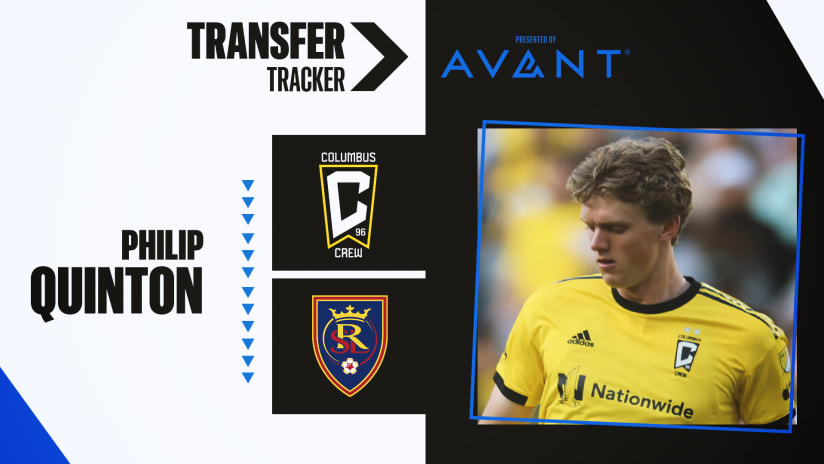Dominic Kinnear is somewhere in that coaching netherworld between “amused” and “bemused.” I've just asked him about his team, about how the Houston Dynamo showed more flexibility in 2012 than most had expected, and this, as it turned out, was something of a touchy subject.
The Dynamo won games with possession last season – including a 23-pass scoring sequence, the longest in the league. People hadn’t expected that. Of course, Houston also won with set pieces, with crosses, with 30-yard Brad Davis bombs, and with counterattacks. They won with the 4-4-2 that we’re used to seeing, and with the 4-3-3 that was a midseason revelation until the goals dried up.
“You either have the ball or you don’t,” Kinnear tells me. “I’m not a big fan of talking formations.”
I’m on the phone with Thomas Dooley, working on a piece about the last 25 years of US national team tactics for Howler magazine. Dooley is, for many of you millennials out there, the best player you don’t remember (or, if you’re particularly unlucky, you only remember him from the 1998 World Cup). He was the first version of Michael Bradley, a box-to-box midfielder who excelled at making plays in transition, starting counters from deep, and finishing them with the third run into the box. He was brilliant.
Between the Lines: The Long Build Part 2
We’re talking about Jurgen Klinsmann’s shift to the 4-3-3, or maybe the 4-3-2-1, or a 4-2-3-1. I’m trying to suss out where Der Golden Bomber is going, and if Dooley is worried that the change will mean the end of the open-field surge. That’s been the lifeblood of US soccer at least since 1990. Probably before.
“Tactics is trusting the guy next to you. That’s all,” Dooley says.
Bob Gansler is paying me a compliment. “I read your column. It’s mostly not [expletive].”
Frankly, that means a lot.
Gansler is, along with Bruce Arena and Sigi Schmid, one of only three managers to win the MLS Cup/Supporters’ Shield double. He also led the US to the 1990 World Cup, and within a Walter Zenga butt-save of a draw with Italy. His résumé speaks for itself.
“If, after five minutes, the 4-4-2 looks like a 4-4-2 out there, you’re [in trouble],” he says. “If the 3-5-2 looks like a 3-5-2, you’re [in trouble].”
He knows. He won that double playing a 3-5-2, and won the US Open Cup four years later in a 4-4-2.
The point I’m laboring to make is that we may, as a soccer culture, be talking about tactics and formations incorrectly.
It’s wrong to make the blanket statement that the 4-4-2 is more simplistic than the 4-3-3, or that the 3-5-2 is more static than other options, or any number of common generalizations that creep into the discussion far too often. So, after some time spent contemplating how to best look at the game – and after some long conversations with the guys mentioned above, and literally dozens of others who know, study and love the game – I’m going to throw down a few guidelines for watching MLS this year:
Pay attention to where the ball is being won.
The surest sign that you’re rooting for a playoff-caliber team is that they’re winning more second balls than they lose (they’re tracked as “recoveries” in the Opta Chalkboard after every game). The top nine teams in recoveries last season all made the playoffs, and the only outlier – Real Salt Lake – fell outside the top 10 simply because they allow fewer possessions throughout the course of 90 minutes. Which means there are fewer turnovers, and fewer opportunities for recoveries.
If your team is recovering the lion’s share of balls in central midfield, then you’re going to be in great shape. If not, you’re probably going to be a sad panda come November.
Pay attention to where the ball is being possessed.
Between the Lines: The Long Build Part 3
Sporting Kansas City made a habit of possessing the ball waaaaay up the pitch, which had less to do with them being a particularly technical team and more to do with their high pressure.
RSL tended to possess the ball higher up the pitch as well, though the reasons were inverted. LA, San Jose, Seattle? Deeper in midfield. D.C. United, Chicago, Houston and the Red Bulls were somewhere in between – for New York, in particular, it varied from game to game.
“When you have the ball, you want to get one more guy closer to it than they have,” Gansler says. “When you don’t have the ball, you want to get one more guy closer to it than they have.”
If you figure out where your team is possessing the ball, you can begin to get a better understanding of where they’re getting that extra player from.
Pay attention to where they’re generating chances.
RSL are going to come down the left-central channel with Álvaro Saborío in the box, the other forward looping to the flanks and the midfield rotating to fill gaps. The fullbacks push up to provide support, but rarely overlap all the way to the endline.
Frank Yallop keeps his flankers wide and trusts them to deliver telling crosses. Either Steven Lenhart or Alan Gordon goes to the near post while Chris Wondolowski goes back post. Seventy-two goals and a Shield.
LA play a 4-4-2 that’s similar to San Jose’s when in defense. When in attack, however, they generate more of their chances from central midfield and the frontline. The flankers come into the play later than San Jose’s.
Seattle – also in their 4-4-2 – are somewhere in between. SKC worked the flanks hard in 2012, but will probably play more centrally in 2013. That's why they brought in Benny Feilhaber. Chicago get their chances from combination play between Patrick Nyarko, Chris Rolfe and Sherjill MacDonald.
It all varies, and the primary lever is talent finding its comfort zone.
That’s it, for now. That’s how we’re going to start looking at and talking about the game in a way that goes beyond names on a whiteboard.
Of course, that doesn’t mean you should stop paying attention to formations. I won’t, either. They still matter – always have and always will. Just take it from Gansler.
“The first thing I like to teach,” he explains, as he still regularly runs coaching camps for the USSF, “is formations and tactics.”
For all of us, though, it’s time for the next lesson.














